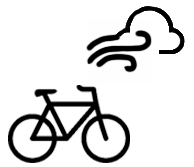UV protection and filter categories for sunglasses and glasses (UV400 filter)

Many people who wear glasses or sunglasses believe that the darker the colour of the lenses, the more protected their eyes will be.
Here's what you should know:
The colour of the lenses does not necessarily correspond to their protective qualities. Dark colours increase the dilation of the pupil, which leads to more harmful UV rays entering the eye than if you weren't wearing glasses.
For this reason, when buying glasses and sunglasses, you should always pay close attention to the UV number, ideally UV400, which is 100% UV protection.
What does UV 400 mean?
UV400 blocks light rays with wavelengths up to 400 nanometers. This covers both UVA and UVB rays. Please refer to the table below.

Do UV rays damage the retina?
UVC rays are absorbed by the Earth's atmosphere, but UVA and UVB rays travel unhindered to the Earth's surface.
Lentiamo's expert explains:
If unprotected eyes are exposed to the sun, prolonged or intense radiation can lead to inflammation of the conjunctiva and cornea, degenerative diseases of the conjunctiva pterygium, and the disease pinguecula. In the long term, the visual organ may be damaged and the lens may become cloudy (cataracts).
Simply put, exposure to the sun without adequate protection can lead to a number of serious problems. These, however, can be prevented by wearing quality sunglasses, which help protect the iris, conjunctiva, eyelids and eye area from tumours caused by sunlight.
So always make sure to wear glasses and sunglasses with guaranteed UV protection, preferably UV400, to guard against harmful UVA and UVB radiation.
More comfort and protection with filter categories
While UV deals with invisible light rays, the other side of the spectrum is visible light – and both kinds can be damaging to your eyes. When you feel yourself squinting, it’s usually due to visible light. Tinted sunglass lenses reduce visible light, making your eyes more comfortable on a sunny day. The levels of visual comfort and protection from visible light are divided into categories that relate to different environments.
Glasses that conform to European Union quality standards are denoted with a CE symbol on the inside of the temples (glasses’ arms). The CE categories are usually indicated by Roman (I to V) or Arabic (0 to 4) numerals and indicate the level of visible light blocked. CE marked sunglasses in any of the following categories will also have at least 380UV protection.
The categories are:
| Filter category | Weather conditions | Glass shade | Utilisation |
|---|---|---|---|
| 0 |  |
3 – 20% |
|
| 1 |  |
20 – 57% |
|
| 2 |  |
57 – 82% |
|
| 3 |  |
82 – 92% |
|
| 4 |  |
92 – 97% |
|
*Note: Due to the light conditions in the car, filter category 2 lenses, which transmit between 18% and 43% of light, are suitable for driving during the day. Filter category 4 lenses only transmit between 3% and 8% of light and should therefore not be used while driving at any time.
As good as the quality of the lenses is, up to 60% of the UV rays can penetrate from above or through the sides. Therefore, large lenses and wide temples ('arms' of glasses) can contribute to optimal protection. In addition, wearing a hat can be helpful.
Other quality features of glasses and sunglasses
- UKCA mark: This marking is specifically for sunglasses sold in the UK . It signifies quality standards very similar to CE, indicating a compliance with high standards including UV protection of at least 380nm.
- Frame type: As already mentioned in the article, sunlight can also infiltrate from above and laterally. In order to ensure optimum protection, slightly larger lenses and wider temples can be used.
- Polarised lenses: These lenses have a special coating that increases visibility by filtering intense light rays. They are designed to reduce the glare of surfaces such as water, snow or glass. Sunglasses with polarising lenses are particularly suitable for car drivers.
- Mirrored lenses: These lenses have a highly reflective surface, which helps reduce the amount of light that enters the eye. Mirrored sunglasses are great for very bright days or glaring environments like ski slopes. Mirroring will enhance visual comfort but can slightly distort colour perception.
